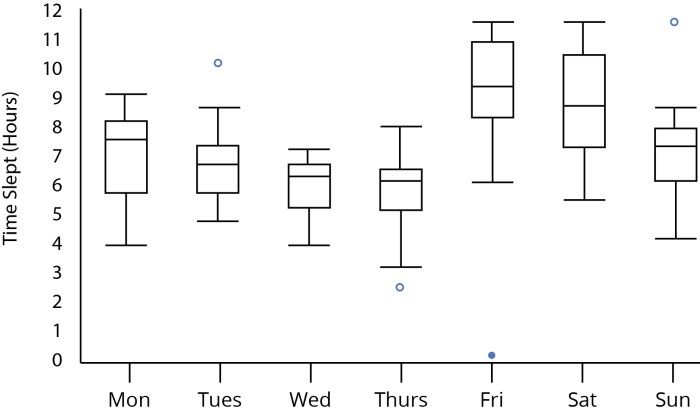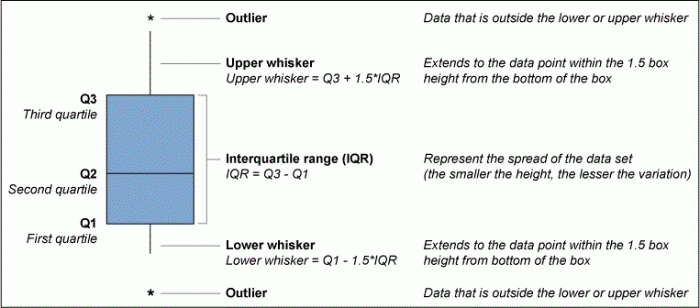The box plot shows the number of sit ups – The box plot, a powerful graphical tool, provides a comprehensive analysis of the distribution of sit-up performance, offering insights into central tendency, variability, and extreme values. This visual representation effectively summarizes data, making it an indispensable tool for understanding the performance of individuals or groups in fitness assessments.
Through the examination of key features such as median, quartiles, and interquartile range, the box plot unveils the central tendency and variability of the data. It effectively identifies outliers, providing valuable information about extreme values that may require further investigation.
The Box Plot of Sit-Ups: The Box Plot Shows The Number Of Sit Ups

The box plot provides a graphical representation of the distribution of the number of sit-ups performed by a group of individuals. It is a valuable tool for visualizing and understanding the central tendency, variability, and shape of the data.
The box plot is constructed by dividing the data into four quartiles: the lower quartile (Q1), the median (Q2), the upper quartile (Q3), and the interquartile range (IQR). The IQR represents the spread of the middle 50% of the data.
Measures of Central Tendency and Variability
The median, which is the middle value of the data when arranged in ascending order, is represented by a line within the box. The median provides a measure of the central tendency of the data, indicating the point at which half of the values are above and half are below.
The quartiles divide the data into four equal parts. The lower quartile (Q1) represents the 25th percentile, meaning that 25% of the data values fall below Q1. The upper quartile (Q3) represents the 75th percentile, meaning that 75% of the data values fall below Q3.
The interquartile range (IQR) is the difference between Q3 and Q1. It measures the spread of the middle 50% of the data and provides an indication of the variability within the data.
Data Distribution
The shape of the box plot can provide insights into the distribution of the data. A symmetrical box plot indicates a normal distribution, while a skewed box plot indicates that the data is not normally distributed.
Outliers, which are data points that fall outside the expected range, can be identified on the box plot as points that are significantly above or below the upper or lower quartile, respectively.
Extreme Values and Outliers
Extreme values and outliers can significantly impact the interpretation of the data. Extreme values are data points that are far from the rest of the data, while outliers are data points that are significantly different from the rest of the data.
Extreme values and outliers can be caused by measurement errors, data entry errors, or unusual occurrences. It is important to identify and investigate extreme values and outliers to ensure that they do not bias the interpretation of the data.
Comparison with Other Data, The box plot shows the number of sit ups
If available, comparing the distribution of sit-ups to other relevant data sets can provide valuable insights. For example, comparing the distribution of sit-ups between different age groups or genders can reveal differences in physical fitness levels.
Key Questions Answered
What is the purpose of a box plot?
A box plot is a graphical representation that summarizes the distribution of data, providing insights into central tendency, variability, and extreme values.
What does the median line in a box plot represent?
The median line represents the middle value of the data, dividing the distribution into two equal halves.
How can outliers be identified using a box plot?
Outliers are identified as data points that lie outside the whiskers, which extend from the upper and lower quartiles by 1.5 times the interquartile range.


